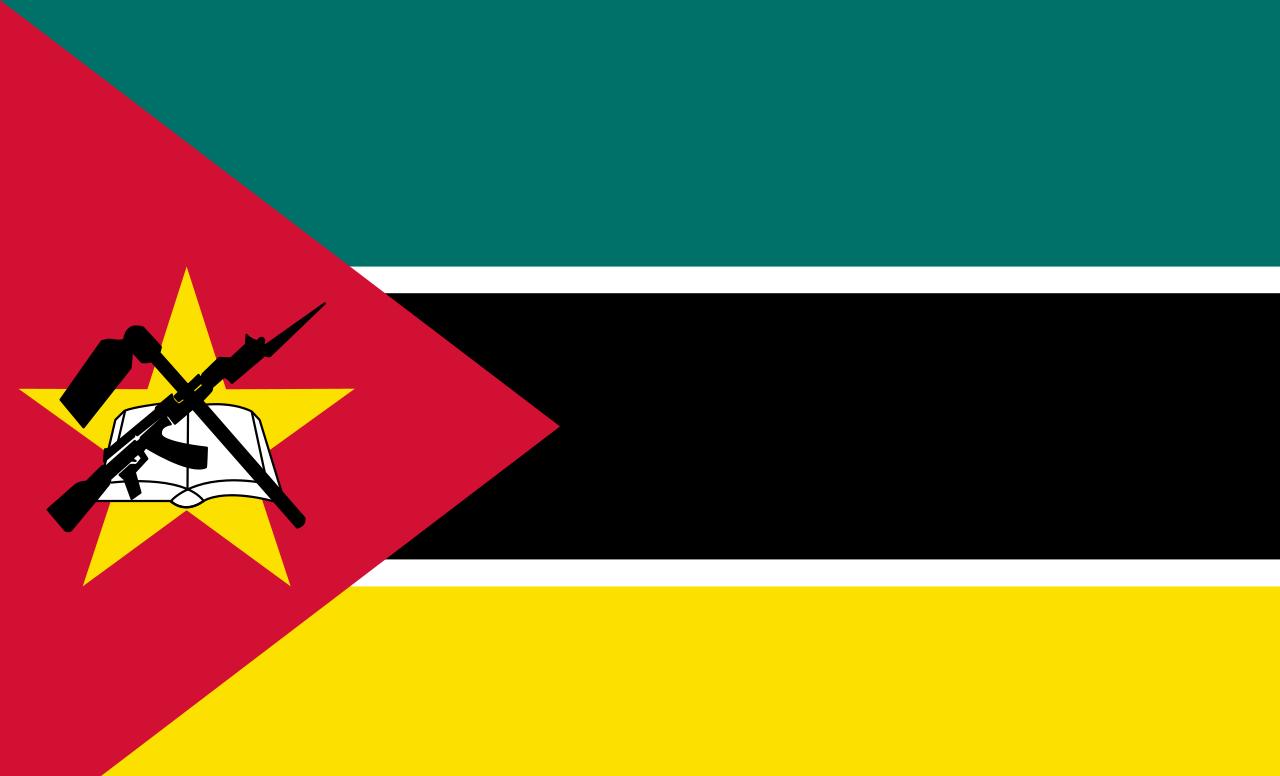The Republic of Mozambique (Portuguese: República de Moçambique), formerly translated as Mosanbique, is now commonly known as Mozambique, located in southern Africa, bordering the Indian Ocean, across the Strait of Mozambique from Madagascar, with Portuguese as the official language, and became independent from portuguese colonial status in 1975. The census population in 2017 was 28,861,863 (preliminary). As a country with no constitutional relations with the United Kingdom, it joined the Commonwealth in 1995 with special examples. Its economy is depressed and it is the world's least developed country and heavily indebted poor countries declared by the United Nations. Coupled with the fact that it was once a socialist country, domestic economic and other values are often compared with North Korea, which has a similar population.

The predecessor of Mozambique was Portuguese East Africa, and Zheng He reached as far as Port Beira in Mozambique when he went to the West. In March 1498, the Portuguese navigator Vasco da Gama led a fleet of ships to Mozambique, when Arab trading posts were established along the coast. Beginning in 1505, it became a Portuguese colony, and Portugal built many trading posts and fortresses along the coast, and made it a port where ships sailing on the east coast of Africa often anchored. Portuguese merchants, missionaries and explorers went further into the interior. It was not until the early nineteenth century that local slavery was abolished.
After nearly five centuries of long colonial rule, the Mozambican people also began to wake up politically, and the call for independence was heard, but the Portuguese government refused to let go of the colony, so a 15-year jungle guerrilla war broke out. The black organizations of the Mozambique Liberation Front, under the leadership of their leader Zamora Machel, engaged in an armed struggle with the Portuguese army. By 1971, the Partisans of the Liberation Front of Mozambique, aided by Soviet weapons, had taken control of vast rural areas of the territory, and a quarter of the territory had fallen into the hands of the guerrillas.
In 1973, the situation in Mozambique was even more chaotic, the guerrilla forces were stronger, and the demoralized Portuguese army was forced to retreat from the jungles of the north to a number of cities. In the face of the tide, the Portuguese government had no choice but to negotiate with the Mozambique Liberation Front to allow Mozambique to become independent. At 19:00 on September 8 of the same year, Portuguese Foreign Minister Mario Suls and the leader of the Mozambique Liberation Front March held talks in Lusaka, the capital of Zambia, and the two sides signed an agreement to immediately cease hostilities, and Portugal allowed the Mozambique Liberation Front to lead the organization of a black provisional government and full independence within 9 months.
After the announcement of this agreement, on June 25, 1975, Mozambique officially declared its independence from Portugal, established the People's Republic of Mozambique, pursued socialism, and raised the mozambican flag composed of green, white, black, yellow and red, as well as hoes, rifles and books, symbolizing peasants, soldiers and intellectuals.
Mozambique's terrain slopes roughly from northwest to southeast, the Zambezi River runs obliquely into the sea, the north of the river is mainly plateau, generally 500-1500 meters above sea level, the coastal plain is narrower, the south is mainly plain, the widest point is about 300 kilometers, and the coast is more swampy, sandbar and mangrove forest.
Mozambique has a savannah climate and a tropical monsoon climate, with an annual precipitation of more than 600-1200 mm. There are many rivers and forests account for about a quarter of the territory.
Mozambique's geographical location is on the southeast coast of Africa, east of the Mozambique Strait and the Indian Ocean island nation of Madagascar across the sea, north of Tanzania, west of Malawi, Zambia and Zimbabwe, southwest of the Republic of South Africa and Eswatini adjacent, the country has a total area of 799,380 square kilometers, the coastline of 2470 kilometers.